Features
D P Logistics adds Robotic Process Automation to warehouse operations

D P Logistics (Private) Limited, a member of the David Pieris Group of Companies, recently introduced Robotic Process Automation (RPA) to their warehouse operations, in collaboration with D P Infotech (Private) Limited, the Group’s IT arm.
Introduction of RPA to repetitive processes within the warehouse has increased efficiency and streamlined the release of goods and vehicles while reducing dependency on human intervention. This has proven invaluable, particularly in the current pandemic situation, where there are restrictions on the number of persons who can report to work and the need for physical distancing.
Given the challenging business environment both locally and globally, DPL is extremely cognizant of the need to reform business operation to cater to customers’ evolving needs for greater efficiency and cost management.
The newly introduced process automation at D P Logistics has enabled transactional tasks that took approx. 15 minutes processing time, to be carried out in 5 minutes while eliminating the need for human involvement in low value, tedious, repetitive processes.
With RPA, efficiency has been enhanced, business operations improved, costs reduced, and productivity increased. Additionally, employee time has optimized, and order fulfilment and operational data entry processes sped up. Since the quality of overall warehouse management has increased as result, customers can benefit from increased operational value and efficiency and lower handling fees.
Developing mutually rewarding relationships with stakeholders and a reputation as an organisation for commitment and reliability in service excellence, D P Logistics covers the entire spectrum of logistics solutions. Providing customized logistics solutions in transportation, 3PL including warehouse management and freight forwarding, the company consistently exceeds traditional norms in logistics.
Features
Rating President’s visit to India
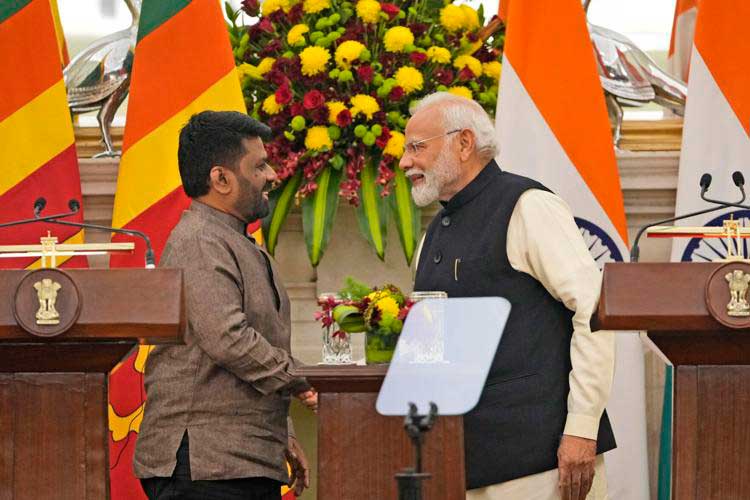
by Neville Ladduwahetty
Sri Lanka’s credit ratings are somewhat positive, according to Fitch and Moody’s, but the general rating of what was achieved during President Anura Kumara Dissanayake’s India visit is mixed. Nothing of much significance was achieved in respect of Sri Lanka’s interests in comparison with what India gained.
The outcome of President Dissanayake’s visit could be summarised as the signing of two MOUs and the 32 topics that were discussed and incorporated in the Joint Statement (JS) between the two leaders. One MOU is on training public officials and the other is on abolishing double taxation.
ISSUES RELATING to the JOINT STATEMENT
President Dissanayake “acknowledged the positive and impactful role of India’s development assistance to Sri Lanka … and India’s decision to extend grant assistance for projects that were originally undertaken through Lines of Credit, thereby reducing the debt burden of Sri Lanka” (The Island, December 17, 2024),
While such measures benefit Sri Lanka as a whole, projects such as “the timely completion of ongoing projects such as Phase III and IV of Indian Housing Project, 3 Islands Hybrid Renewable Project … and projects for the Indian Origin Tamil community, Eastern Province are specific to the Tamil community, even though the JS also refers to “High Impact Community Development Projects across Sri Lanka and the solar electrification of religious places” (Ibid).
In addition, topic 12 is titled “Building Connectivity”. Topic 12 (1) states: “While expressing satisfaction at the resumption of the passenger ferry service between Nagapattinam and Kankesanthuria, they agreed that officials should work towards the early recommencement of the passenger ferry service between Rameshwaram and Talaimannar” (Ibid).
As the sub-title states, “Building Connectivity” the benefits of these, so called development projects would be to boost the economic growth in the 5 Southern States, namely, Kerala, Karnataka, Tamil Nadu, Andhra Pradesh and Telangana in India and the predominantly Tamil regions in Sri Lanka. The outcome of this skewed growth will serve India’s interests but it will be a fetter to the inclusive growth that the NPP has been harping on during and after parliamentary elections. Furthermore, it was the appeal of this slogan that caused the people to respond the way they did in both elections, and the NPP government should not disappoint the public.
The concept guiding this strategy is the misguided logic that Sri Lanka’s economic growth could be ensured by hitching Sri Lanka’s wagon to the rapidly growing economy of India. Since an array of influential individuals, political parties and think-tanks are convinced by this notion, it appears that the NPP government has fallen victim to those compulsions. However, the disparities between the 5 Southern Indian States and Sri Lanka are such that if most of what is in the JS is adopted by the Sri Lankan government, the outcomes would be not only disappointing but also detrimental to Sri Lanka’s interests to foster an inclusive society.
DISPARITIES BETWEEN 5 SOUTHERN INDIAN STATES and SRI LANKA
TRADE: The JS 17 states: “Underscoring the pace of economic growth and opportunities in India as the growing market size and its potential for enhancing trade and investment for Sri Lanka, both leaders agreed that it is now opportune to enhance the trade partnership by committing to (i) Continuing discussions on the Economic & Technological Cooperation Agreement (ECTA)(ii) Enhance INR-LKR trade settlements between the two countries ….”
While the need to enhance Trade and Investments cannot be denied, the existential realities are such that the expectations are not achievable because of the inherent disparities. For instance, the Imports from India are around $ 4.5 billion and $3.58 billion, depending on the source, while the exports from Sri Lanka to India were only $ 850 million in 2022. Other disparities are that while the per capita GDP of the five Southern States varies from $ 2,500 to low $ 3,000, the per capita GDP of Sri Lanka is more than $ 3,800. Furthermore, the cost of labour in India is lower than in Sri Lanka. This coupled with the fact that nearly 50% of labour in India is engaged in agriculture as opposed to about 30% in Sri Lanka, besides the lower cost of agricultural inputs in India, makes the cost of production in India lower than in Sri Lanka. Consequently, imports from India to Sri Lanka would remain significantly higher than exports from Sri Lanka, thus making the prospect of “enhancing trade and investment for Sri Lanka” JS, 17) a myth.
INVESTMENTS: JS 17 III states “Encourage investments in key sectors in Sri Lanka to enhance its export potential”.
“In the fiscal year 2023, the Reserve Bank of India (RBI) granted permission for international trade for invoicing and payments to be conducted in Indian Rupees. This move allowed for exports and imports to be denominated and invoiced in Rupees, with trade transactions settled in the currency. The RBI’s decision aims to stimulate global trade growth, particularly Indian exports, while also working towards the internationalisation of the Indian Rupee” (Ceylon Today, February 28, 2024).
“Last year, Sri Lanka officially recognised the Indian Rupee as a designated currency, enabling trade settlements between the two countries to be conducted in rupees” (Ibid).
“Currently, Indian Investors typically engage in investments in Sri Lanka using international currencies like the US Dollar. Since this involves additional complexities and conversion costs, the transition to Rupee investments is expected to streamline market entry for Indian companies, with the Ministry of External Affairs reportedly advocating for this transition” (Ibid). The consequence then would be for Indian companies to deploy cheap Indian labour, thus displacing Sri Lankan labour; a fact that would particularly apply to the IT sector.
The report finally states: “The push for rupee investments aligns with India’s broader vision to elevate its currency to the status of hard currency in the future, potentially leading to inclusion in the IMF’s SDR basket and bolstering its foreign exchange reserves. This move is anticipated to benefit Indian firms with significant investments in Sri Lanka, such as the Adani Group’s development projects in the country’s port and power sector” (Ibid).
THUS, the compulsion to convert TRADE and INVESTMENTS to Indian rupees is entirely driven for the benefit of India.
MPACT of UPI on TOURISM
A former State Minister is reported to have stated: “The UPI is beneficial to both countries. If you look at the events in Sri Lanka and what took place one and a half years ago, it mainly started out as a foreign exchange crisis mainly due to lack of dollars. So, we have to ensure that our dollar dependency is reduced. Now, for example, our biggest tourist market is from India and if we can collect the tourist remittances from India and we import about $ 5.5 billion worth of goods from India and we use those …to pay in Indian rupees for the Indian imports, then we will reduce our dollar dependence. And it also becomes very flexible and very easy for the Indians to travel to Sri Lanka and then they pay in Indian rupees”. (Sunday Island, February 25, 2024).
Despite this misguided understanding of the former State Minister, the fact is that out of a total of 1.48 million tourists that arrived here in 2023, Indians numbered only 302,844. This represents 20 % of the total. The revenue from tourism for the year 2023 was USD 2.1 billion. Therefore, on an average, earnings from Indian tourists would be 20% of USD 2.1 billion. Although this amounts to only USD 420,000, since Indian tourists pay in Indian rupees, UPI favours the Indian tourist over other tourists who pay in international currencies. Consequently, at current levels of tourist arrivals from India, Sri Lanka is at a loss of $ 420,000 and growing because of UPI (ECONOMYNEXT, January 1, 2024 & January 5, 2024).
INVESTMENTS IN INDIAN RUPEES
When Sri Lanka calls for competitive bids for projects it is understood that bids would be based on international currencies so that all bids are evaluated on a level playing field. If an Indian investor such as Adani or any other, is given a special privilege and permitted to submit proposals based on Indian rupees which is still not recognised as an internationally recognised currency, it would amount to an act of discrimination. Furthermore, it would amount to an unsolicited offer that puts other bidders at a disadvantage.
In addition, any dollar inflows into Sri Lanka would add to the reserves of Sri Lanka and could be used for debt payments. On the other hand, any Indian rupee inflows, even if considered to be part of Sri Lanka’s reserves, would serve little or no purpose for international transactions.
Therefore, if Sri Lanka fails to recognize these implications and caves under Indian pressure to recognize Indian Rupees for investments in Sri Lanka for the sake of connectivity, it would be a grave injustice to the sovereign rights and independence of the People of Sri Lanka with consequences to Sri Lanka’s relations with other countries.
FISHERIES ISSUES
Topic 27 of the JS states: “Acknowledging the issues faced by the fishermen on both sides and factoring the livelihood concerns, the leaders agreed on the need to continue to address those in a humanitarian manner”. It is extremely disappointing that Sri Lanka’s President capitulated and agreed to address issues relating to fisheries in a “humanitarian manner” when what is at state is the impact on the livelihood of the Sri Lankans engaged in fishing and the rampant destruction of Sri Lanka’s resources by resorting to bottom trawling that belong to the whole nation driven by the greed of the politically backed Indian fishing community.
According to the Northern Province Fisheries Association Chief M.V. Subramanium the financial loss to Sri Lanka amounts to Rs. 900 Billion (approximately USD 3.0 Billion) annually due to pillage by Indian fishing vessels operating illegally in Sri Lankan waters. Similarly, it costs Indonesia and Malaysia annually, $2 Billion and $1,4 Billion respectively from illegal fishing.
The NPP Government must get real and stop attempts to explore “humanitarian” approaches and seek the assistance of the International Court of Justice to establish International Maritime boundaries and Reparations for the damages inflicted because no amount of talking would resolve this issue.
CONCLUSION.
Issues of consequence to Sri Lanka presented in the Joint Statement (JS) following the inaugural visit of Sri Lanka’s President to India are: No double taxation; Enhancing Trade with India; ECTA; Use of Indian Rupees for investments by Indian companies; Use of Unified Payments Interface (UPI) and its impact on tourists; Fisheries Issues. As far as these issues are concerned India the gain to India far outweighs gains to Sri Lanka. As for issues relating to Fisheries, the outcome was a disaster because of the misguided notion that issues relating to it could be resolved in a “humanitarian manner”. Therefore, the collective rating has to be that what was achieved during the President’s visit was far from hoped for expectations.
Another issue that is of relevance is the practice of Governments to grant aid projects to specific communities as reflected in the JS. This habit undermines the much touted slogan of this Government to foster an inclusive Sri Lankan society. This Government has to vigorously oppose the practice of gaining advantages by exploiting “division”; a practice that that continues to haunt Sri Lanka .
Features
The second term of Donald Trump: What could we expect? – Part III

by Tissa Jayatilaka
(This article is based on a talk given to the members of the Sri Lanka Foreign Service Association on the 10th of December, 2024. First part of it appeared in The Island of 01 Jan. 2025).
Meantime Trump on Monday, 2 December, 2024, in a post on ‘Truth Social’ indicated that he seeks an Israel-Hamas ceasefire before he takes office in January. He has promised that ‘there will be hell to pay’ if captives held in Gaza during Israel’s ongoing war are not released when he becomes President on 20 January, 2025. Whether this is all too familiar Trump bluster or if he is serious in his intent is not yet clear. It also seems contradictory to his ‘America First’ policy.
What of Trump’s likely China policy? Rick Waters, a former State Department specialist on China, who worked for the first Trump term, in a recent ‘China Power Podcast’ with Bonn Lynn, the Director of the ‘China Power Project’ and Senior Advisor at the Centre for Strategic and International Studies’ (CSIS) in Washington D.C, is of the view that there is likely to be ‘significant volatility’ in the US-China relationship. Biden, Waters observes, did not re-set the China Policy of Trump when he took over the Presidency in 2020. Waters is of the view that a ‘leader level channel’ between the US and China is crucial when Trump begins his second term. He foresees the establishment of ‘Asian NATO’ in the Indo-Pacific to counter China whereby the QUAD and AUKUS will be strengthened, and Washington- Tokyo-Manila and Washington-Tokyo- Seoul trilateral alliances formed.
The entrenched view held in Washington, according to Brian Wong of The Diplomat in his insightful piece titled How will China react to Donald Trump’s Second Term (13 November, 2024) is that the United States is uniquely confronted by a systemic rival in China, and that swift and assertive responses are needed to prevent the displacement of US hegemony by a state beholden to neither the values nor interests of Washington.
Wong’s view is that Trump’s likely approach to China is best likened to “Russian roulette” given Trump’s penchant for risky gambits and transactional diplomacy. Some commentators feel that Trump, as he did in his first term, will broker “deals” in order to steer the East Asian region away from a hot war – – though through what means and with what effects he will do so are not as clear. Trump’s China advisory and foreign policy team seems set to feature a combination of individuals harbouring deeply ideological grievances towards China (Marco Rubio, Tom Cotton, and Robert O’Brien); or a tendency to view China through the lens of a great power competition that the United States must win (Ric Grennell, Elbridge Colby, and Bill Hagerty); or the belief that trade globalisation has been anathema to the U.S. interests of the U.S working class and domestic interests in general (Robert Lighthizer, Peter Navarro).
Few amongst these are interested in “cooperating” with China- – which they construe to be an existential risk to the United States, economically, militarily, and geo-strategically. US engagement with China, they would declare unequivocally, has failed.
Trump will have to moderate some of his extreme and self-undermining protectionist measures so as to deliver for the MAGA crowd that voted him into office- -if he is even remotely committed to bringing down prices, the Achilles’ heel of the Biden administration.
Today’s international, political, and geopolitical scene is dominated primarily by the different worldviews of the United States and China. According to Stephen Roach- -the author of ‘Unbalanced: The Co-dependency of America and China’ (2014) and ‘Accidental Conflict: America, China, and the Clash of False Narratives’ (2022)- – ‘Sinophobia’, which began in the United States at the beginning of the 21st century, is in full swing today based mostly on their competition in the fields of technology and trade. China has responded with ‘Ameriphobia’ demonising the United States for its accusations of Chinese economic espionage, unfair trading practices, and human rights violations.
The U.S has long been intolerant of competing ideologies and alternative systems of government. The claim of ‘American exceptionalism’ seemingly compels the United States to impose American views and values on others. That was true during the Cold War, and it is true again today.
The western bias over ‘losing China’ after the 1949 Revolution warned us of a “Red Peril”. Today we are being warned of a ‘Rising China’, modernising its nuclear and defence programmes. This ‘China bogey’, as the late Jayantha Dhanapala, the former UN Under-Secretary-General for Disarmament Affairs and foremost Sri Lankan diplomat noted a few years ago, will continue to be peddled as part of a larger conspiracy to create a new a Cold War in Asia between a ‘democratic’ India and an ‘autocratic’ China.
To put it briefly, if the prevailing Sinophobic tension in the United States-China relations deteriorates further, it will not do any of us any good. The leaders of the U.S “need to avoid the low road and think more in terms of being the adult in the room.” (Roach:2024). Roach quotes Franklin Roosevelt’s memorable line from his inaugural address in 1933, “The only thing we have to fear is fear itself,” and notes that amidst Sinophobic frenzy, that message is well worth remembering. Amen, I say.
The geopolitical rivalry emanating from the fraught U.S.- China power competition is complicated further, by what appears to be, India’s ambiguous role. True, India is a part of the QUAD and I2U2 (a security partnership among India, Israel, United Arab Republic and the United States), but India also has close relations with Russia and Iran. The recent border agreement between India and China is viewed as a diplomatic breakthrough, given the heightened tensions between the two sides after the Galwan Valley clash in 2020. Some observers suggest that the current breakthrough signals a significant change in India’s threat perceptions of China, with some India- China watchers interpreting it as a desire on India’s part to operate independently of its relationship with the United States. It may also be indicative of India’s interest to bolster its economy while continuing to flaunt, what India refers to as, its multialigned foreign policy.
In the emerging scenario in which complex geopolitical developments are at play in Asia and the Indian Ocean Region, Sri Lanka would do well to steer clear of them and adopt what I would term the ‘Penelope strategy’ that we encounter in Homer’s epic poem ‘Odyssey’. This is the non-committal path, that Sri Lanka, given its unalterable geographic location, needs to take if it wishes to avoid harm arising from ‘big’ power conflict in our region.
In 2002, during a Fulbright Visiting Scholar Enrichment Conference held in Washington D.C, Prof. Benjamin Barber of the University of Maryland gave a memorable keynote speech titled Democracy vs. Jihad vs. McWorld. In this speech he urged the United States, which has lived for almost 226 years with the ‘Declaration of Independence’, to now issue a ‘Declaration of Interdependence’. Given, especially the non-traditional security threats all of us face today, such as, resource scarcity, climate change which can lead to environmental degradation, natural disasters, poverty, infectious diseases, drug trafficking and terrorism that affect all of humanity, Prof. Barber’s call is even more urgent today than when he first articulated it. In the 21st century that we live in, ‘smart weapons’ are much less important than ‘smart ideas’.
The reality of the world of today is interdependence, as Prof. Barber pointed out almost 25 years ago. I would add one other ingredient and say that today we need both interdependence and multilateralism (however anathematic that may be to Mr. Trump and his colleagues-to-be). As the former Secretary to the Ministry of Foreign Affairs and one of Sri Lanka’s outstanding diplomats (now retired) said a few months ago when he delivered the inaugural Jayantha Dhanapala Memorial Oration, given that all threats or concerns humanity faces ‘are borderless in form and content, negotiating solutions and mitigating measures must, of necessity, be multilateral’. In a multipolar world, and in an order that is in flux we need more multilateralism than ever before, opined Palihakkara.
As a lead-up to this conclusion of his, Palihakkara told us the following:
As one of my dialogue partners from across Palk Straits commented in a lighter vein, the multilateral system needs to respond quicker before the AI-equipped cheap drones can become the poor man’s weapon of mass destruction.
Although stated in a lighter vein, one notes a serious underlying point in the above quote which underscores the direction in which we should head if we are to live in a peaceful world. (Concluded)
Features
Deadly walls and catastrophes

For more than ten years this Seeya has been complaining about the potentially deadly concrete wall at the Galle Road end of Colombo International Airport Ratmalana (CIAR).
There have been several fatal crashes of aircraft into similar walls or man-made obstructions at various locations around the world: American Airlines, at Little Rock, Arkansas, USA on June 1, 1999 (11 fatalities); Aria Air (of Iran), at Mashhad, Iran on July 24, 2009 (16 fatalities); Air India Express at Kozhikode-Calicut, India, August 7, 2020 (16 fatalities).
Most recently, on December 29, 2024 a Boeing 737-800 of Jeju Air landing at Muan International Airport, South Korea crashed into a berm, or concrete barrier, at the end of the runway, resulting in the loss of 179 of the 181 ‘souls on board’.
In Sri Lanka, the Aircraft Owners’ and Operators’ Association (AOAOA) has frequently raised concerns about the likelihood of a serious incident or accident at Ratmalana resulting from an aircraft running into the wall. The association’s representations on this serious safety issue were made directly to the nation’s joint aviation authorities: Civil Aviation Authority Sri Lanka (CAASL); Airport and Aviation Sri Lanka (AASL); and Sri Lanka Air Force (SLAF). Yet none of those bodies has jointly or severally paid any attention to addressing the AOAOA’s warnings.
It would appear that the regulatory authorities are either ignorant of, or choose to ignore, the fact that the wall at CIAR is in violation of International Civil Aviation Organisation (ICAO) standards and recommended procedures which specify that, in instances where such a wall or berm is necessary, a frangible fence (i.e. designed to break easily on impact) should be erected instead of a solid, reinforced-concrete barrier.
Now, despite the lesson from the Jeju Air/Muan tragedy, will our joint authorities continue to ‘sit on their hands’ while ignoring the AOAOA’s pleas based on safety considerations and rational thinking?
Interestingly, two of those three authorities are now headed by the same individuals who were responsible for constructing the wall, which is supposedly earning money for the ‘welfare’ of SLAF personnel by serving as a billboard or hoarding for commercial advertisements.
If money is their concern – either advertising revenue, or the cost of dismantling the RIA wall – the authorities would do well to heed the advice of a veteran aviator and safety expert who once said: “If you think that safety is expensive, try an accident.”
Guwan Seeya
-
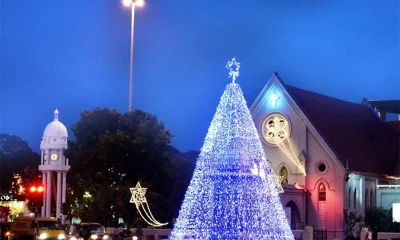
 Features5 days ago
Features5 days agoThe recovery has begun
-
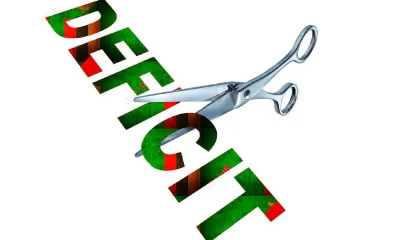
 Business6 days ago
Business6 days agoSri Lanka budget deficit decreased by Rs. 487 bn in first 10 months of 2024
-

 Business7 days ago
Business7 days agoSupporting the Increase in Withholding Tax: A Step Toward Strengthening Sri Lanka’s Tax System
-

 Editorial7 days ago
Editorial7 days agoTrimming the fat
-
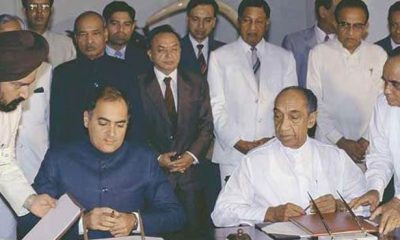
 Features7 days ago
Features7 days agoThe Parliament bomb: Former Secretary-General remembers
-
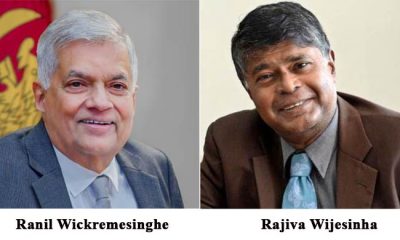
 Features7 days ago
Features7 days agoRajiva Wijesinha on Ranil Wickremesinghe
-

 Business6 days ago
Business6 days agoDigital marketing in high gear to increase tourist arrivals to Sri Lanka
-

 News6 days ago
News6 days agoSita Ratwatte passes away












